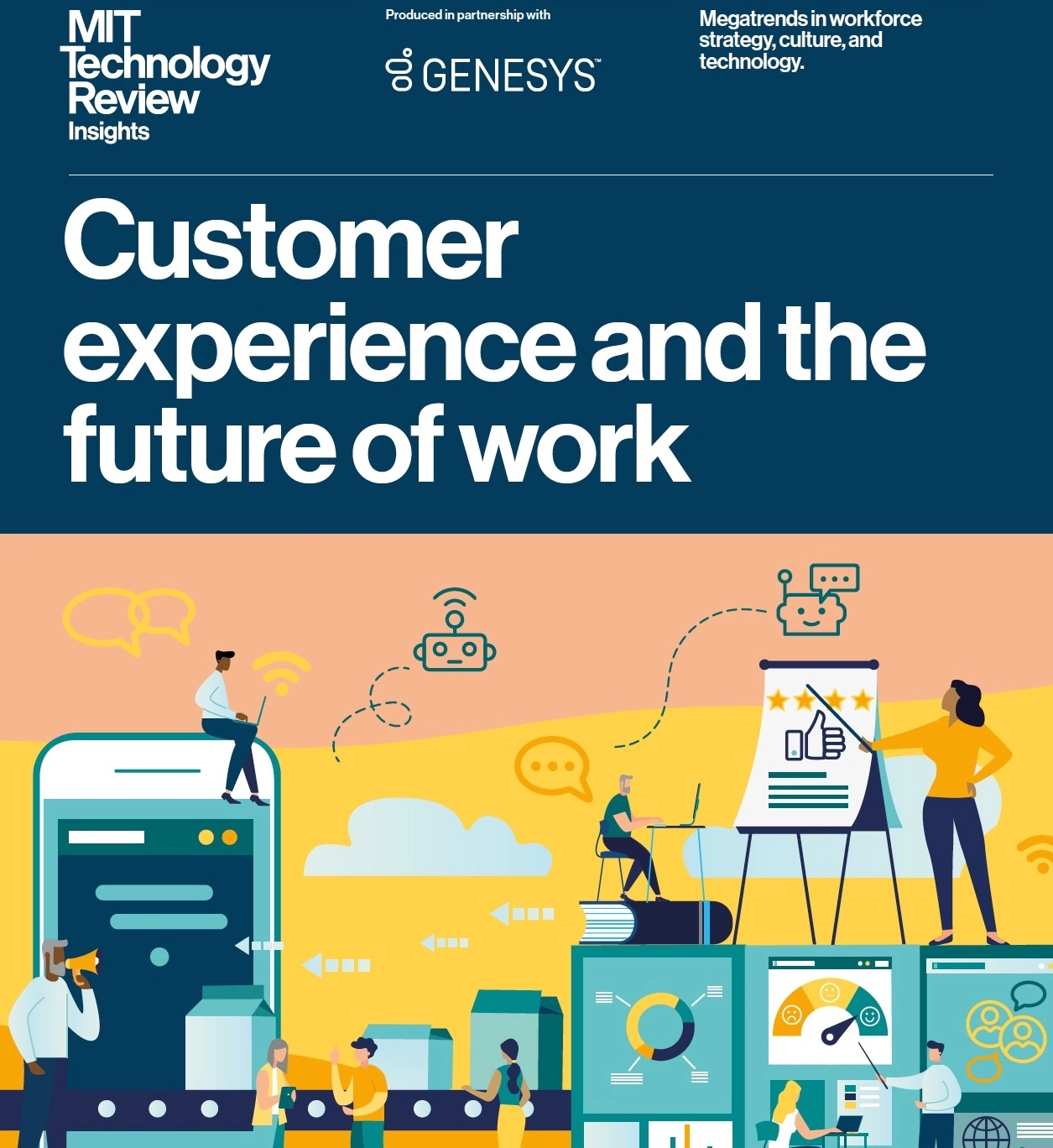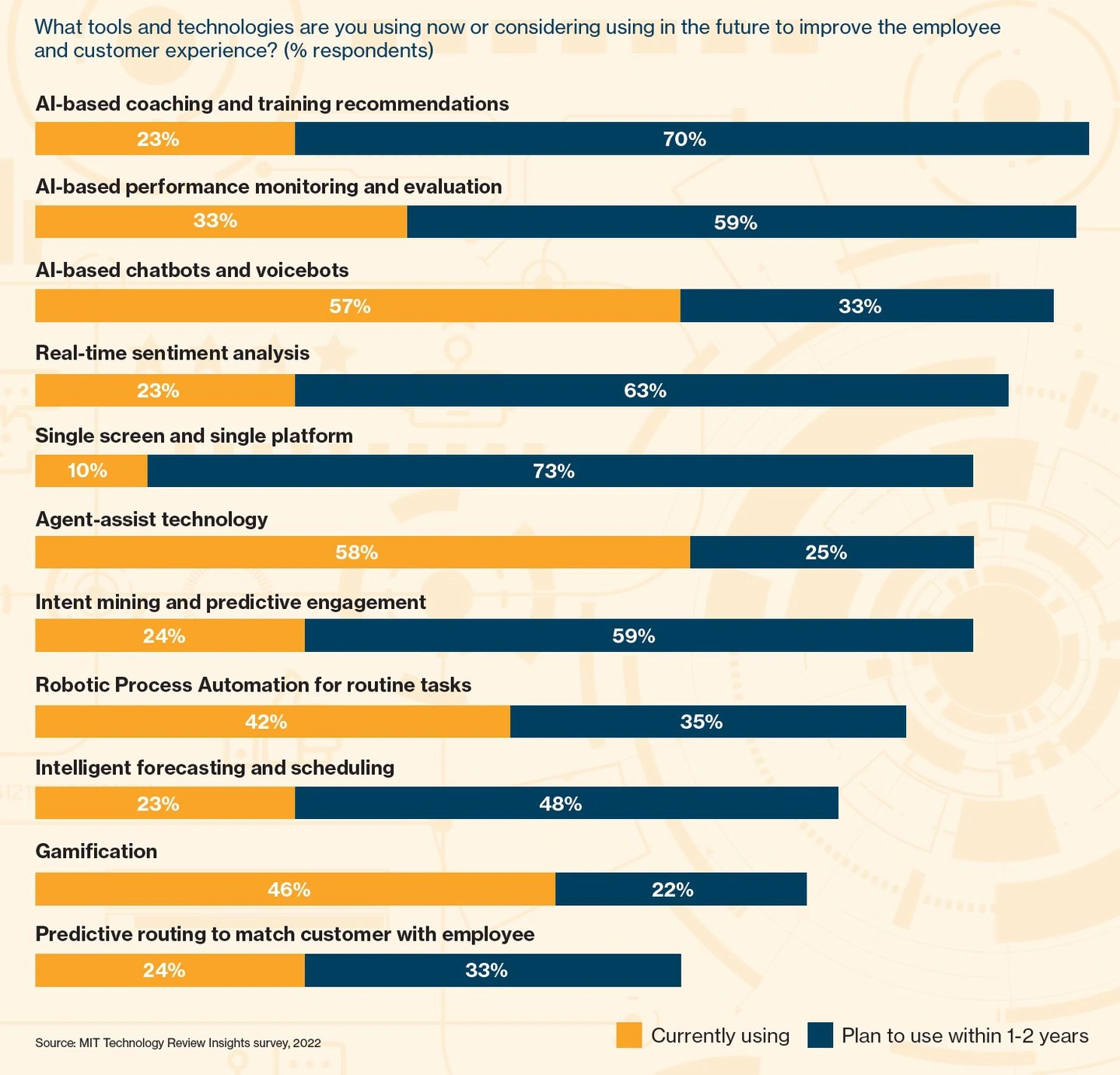Your Genesys Blog Subscription has been confirmed!
Please add genesys@email.genesys.com to your safe sender list to ensure you receive the weekly blog notifications.
Subscribe to our free newsletter and get blog updates in your inbox
Don't Show This Again.

Organizations across all industries are reaching a stall point in their ability to improve the customer experience (CX). Their staff — and customers — deserve better.
Over the past three years, organizations have used agility to respond to all the unexpected changes in the world. They’ve digitized customer processes and focused on data and technology to drive personalization and empathy.
While many organizations have gained ground in becoming more customer-centric, most have largely failed to make progress on employee centricity — particularly for staff at the frontlines of customer interactions: contact center agents, supervisors and other customer support specialists.
“Customer Experience and the Future of Work,” a new report by MIT Technology Review Insights in collaboration with Genesys, finds an outdated paradigm exists with contact center employees. Across industries, CX leaders too often accept high attrition and the associated costs as inevitable. Employees have been considered temporary and replaceable, with continuous recruiting and onboarding processes being seen as just the price of doing business.

Succeeding in the experience economy means putting people first. That means your employees, too.
This report explores how the Great Resignation is leading to a Great Reorganization.
The research found that 96% of survey respondents consider recruiting CX employees to be challenging. And 62% are struggling with increasing recruitment costs. But just one-third identify high turnover to be a problem.
And that is a problem.
The Great Resignation (which PWC predicts will continue through 2023), tight labor markets and constantly rising costs leave transactional staffing models no longer sustainable. It’s simply too expensive to lose employees and investments made in their recruitment, onboarding and training.
To thrive in today’s experience economy, where 70% of consumers say a company is only as good as its service, organizations need highly trained and engaged employees. They should be motivated to solve customer problems, up-sell and grow the business — all while interacting with customers using empathy and understanding. Not having the right people in place to deliver those great customer experiences represents an even greater risk than rising costs.
A disengaged CX workforce means lower customer satisfaction. And it means missed opportunities for innovation, new product and service developments, and process efficiencies. Ultimately, your brand is at stake.
How can CX organizations succeed in the experience economy? By putting employees first — implementing new approaches to resourcing; providing a supportive infrastructure of contact center solutions, tools and technology; and delivering employee experiences based on what staff value most.
Seventy percent of CX leaders surveyed for the report say they expect to hire a greater number of contact center agents and supervisors over the next two years. Additionally, they expect an increase in staff with specialized skills, such as data analytics, customer process mapping and journey optimization, and expert product knowledge.
To attract and retain these highly skilled team members, organizations need to rethink the employee experience just as intently as they’ve redesigned their customer experience strategies.
Hybrid working, one of the themes explored in the report, is easing some of the pressure on staffing. Some 84% of respondents say hybrid or remote models enable them to retain employees by offering greater flexibility. Other benefits include lower employee stress levels and access to brand advocates and staff with deeper knowledge. Less than 40% of CX leaders will require staff to work fully on site within the next two years.
Yet, concerns remain about how this will play out in the long term.
Four out of five respondents find it challenging to define new hybrid and home-working models. Other concerns include the potential for lower productivity, inconsistent or poor customer experience, and a negative effect on company culture and collaboration.
Organizations need to embrace the tools and technology available to manage hybrid and remote CX teams effectively. And they must provide the support employees need to thrive without supervisors immediately on hand.
The survey found ample room for improvement in the day-to-day employee experience. Managers say employees feel most frustrated when they lack sufficient information to assist customers in the moment. Two other primary points of frustration are the challenges around supporting frustrated customers and insufficient learning and development opportunities.
Artificial intelligence (AI) can help resolve these issues and identify the root causes of others. More than two-thirds of surveyed CX leaders are exploring AI for making coaching and training recommendations over the next one to two years.
Similarly, 60% are planning to implement AI-based performance monitoring and evaluation over the same timeframe.
Other technologies for future investment include AI-based chatbots and voicebots, real-time sentiment analysis, agent-assist technology, intent mining and predictive engagement. These tools will noticeably improve CX and provide greater help to employees as they navigate voice and text interactions.
Looking beyond AI, 70% of CX leaders plan to implement a user interface that gives agents a “single screen and single platform” over the next two years. This will greatly alter the employee experience — significantly reducing complexity, improving access to information and reducing average handle time. Just 10% of the respondents say their agents are currently working from a single screen and platform.

Improving the daily working experience is essential to avoid unnecessary turnover. But staying with any organization for a meaningful period of time has to serve employees’ personal and professional goals.
This requires employers to provide robust learning and development opportunities as well as clearly defined career paths. Less than one-third of survey respondents say their organization currently has these career paths developed.
However, 50% are working on better contact center career paths. And 61% are developing tracks that extend beyond the contact center.
Seven out of 10 survey respondents selected “learning and development” as an area of the employee lifecycle that requires the biggest improvement. Other than using AI to identify learning needs and coaching opportunities, managers plan to hire additional learning and development specialists to invest in their CX staff.
This focus is likely to pay off.
“Human values: The operating system for a high-performing contact center,” a global survey of more than 16,000 agents worldwide, finds that employees most enjoy having opportunities to learn new skills and technologies at work.
Technology and having a culture of empathy for both customers and employees will drive transformation at CX organizations. The CX employee experiences will be orchestrated in parallel to customer experiences — increasing customer satisfaction, operational efficiency and your team’s ability to win in every interaction.
Companies will need to completely rethink their strategy, culture and technology to make this vision a reality — and, ultimately, create the environment your employees (and customers) deserve.
Subscribe to our free newsletter and get blog updates in your inbox.